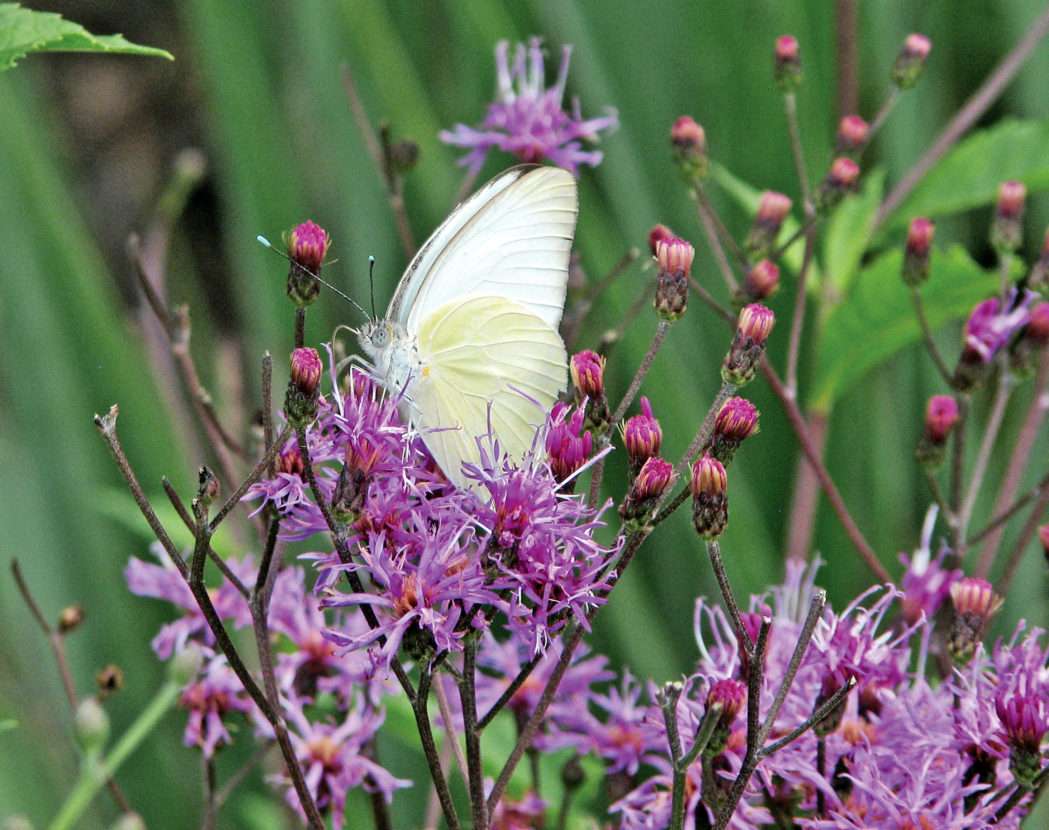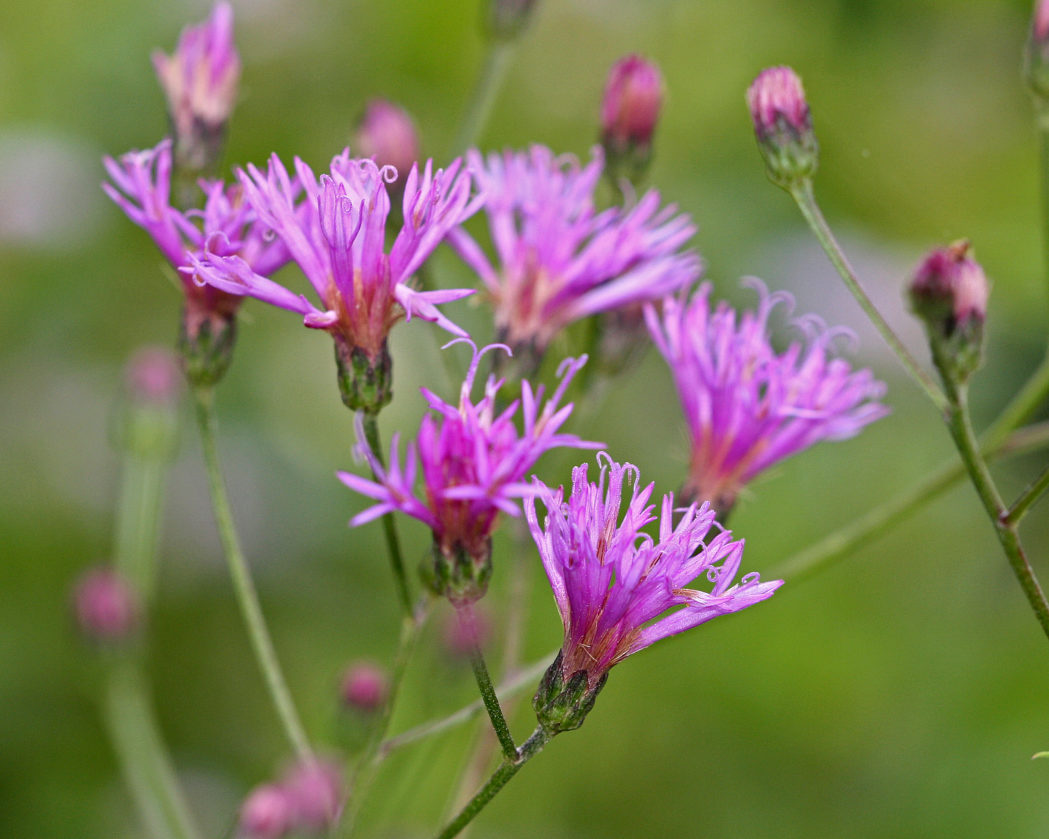Giant ironweed
Pictured above: Great Southern white on Giant ironweed (Vernonia gigantea) by Peg Urban. Click on terms for botanical definitions. View post as a PDF.
Giant ironweed (Vernonia gigantea) is a robust, perennial wildflower found naturally in floodplains, wet to mesic pine flatwoods and ruderal areas, and along forest margins and stream banks. Flowering occurs in summer and fall, attracting a variety of pollinators, especially butterflies.
Unlike many members of the Aster family, the Giant ironweed flower lacks ray florets. Its disc florets are tubular and deep purple. Extending from within each disc floret tube is a bifurcated and curled style. Flowers are about 1 inch in diameter and are born in loose terminal panicles. At the base of each flower are bracts that vary in color from dark green to purplish-green to brown. Basal leaves are coarse, oval-shaped and appear in early spring. Stem leaves are narrowly ovate to elliptic and can grow up to 8 inches long. Both have serrated margins. Stems may be glabrous or finely pubescent. Seeds are tiny achenes with tufts of bristles that catch the wind and aid in dispersal.
The common name, ironweed, may refer to the toughness of the stem of this and other Vernonia species.
Family: Asteraceae (Aster, composite or daisy family)
Native range: Panhandle and peninsula south to Martin and Lee counties
To see where natural populations of Giant ironweed have been vouchered, visit florida.plantatlas.usf.edu.
Lifespan: Perennial
Soil: Moderately dry to moist, well-drained sandy or loamy soils
Exposure: Full sun to partial shade
Growth habit: 3-5’ tall
Propagation: Division, seed
Florida regions of landscape suitability: North, Central, South
Garden tips: Giant ironweed is very adaptable in the landscape, although it is not drought tolerant. It is an excellent addition to a butterfly garden or mixed wildflower garden; due to its height, it is best located in the back of the planting. This plant can sucker and may require weeding to contain it. It is deciduous and will die back in the winter.
Giant ironweed is occasionally available from nurseries that specialize in Florida native plants. Visit www.PlantRealFlorida.org to find a nursery in your area. Seeds are often available from the Florida Wildflower Growers Cooperative.
Learn more about Giant ironweed from the Florida Native Plant Society and the Institute for Regional Conservation.


